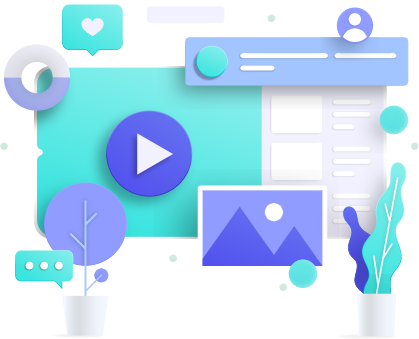NFTs are perhaps one of the current hottest topics across the planet and consequently have seen a massive boom both in the market and media. The technology, which was born as a natural progression of the blockchain, has been all over the news and social media in the past few months. Everyone wants to have a piece of it. NFTs have empowered designers to achieve financial freedom wherein they can sell their own artwork as trading tokens.
What is NFT Art?
NFT is an acronym that stands for “Non-Fungible Token.” Unlike fungible goods, like banknotes, which can be exchanged with other banknotes of the same value, Non-Fungible Tokens are not replicable or replaceable because they have specific individuality. This individuality is rendered by a digital mark with a certificate of authenticity and uniqueness. This certificate is issued thanks to the blockchain technology that establishes proof of ownership.
The non-fungible aspect of an NFT refers to the uniqueness they possess, which makes an NFT essentially irreplaceable. This means that an NFT is a one-of-one; there is only one original. While NFTs are similar to cryptocurrencies like Bitcoin and Ethereum, a digital art NFT is wholly unique and cannot be exchanged. Every file stores extra information that identifies the original owner elevating it above any other pure currency or cryptocurrency. NFTs are comparable to any physical piece of art in the offline world, as each NFT design is a collectible digital asset that holds value.
Any digital file such as photography, art, music, videos, tweets, and even memes can be stored as NFTs. Owning an NFT is similar to owning a physical piece of art, such as the Mona Lisa. The only difference is that you own a digital file instead of a physical item. You are paying for the file and ownership rights over that specific digital file.
To better understand how NFTs work, it is important to understand blockchains. As the name suggests, blockchains are a type of database where data is stored in blocks, chained together. These chains between the blocks establish a chronological record of data – thus making it easy to trace the original owner.
The data on a blockchain can be centralized or decentralized. In the case of cryptocurrencies and NFTs, the data is on a decentralized database. Blockchain technology makes all transaction records of authorization, ownership, and transfer publicly accessible.
Benefits to art and artists
One might ask how beneficial exactly is the certification and legitimacy of an NFT? What is the use of owning a digital asset that can easily be downloaded?
NFTs are revolutionizing the relationship between a creator and their consumers through scarcity. The scarcity of any asset contributes to its value. NFTs combine scarcity with technology like blockchain and influential establishments and personalities push to find a way to make it the most efficient and democratic way to transact. NFTs, ensure that owners support creators by paying a value that truly matches the demand for the digital asset in the market.
Before cryptocurrencies, people could share posters, videos, motion graphics, and animations, repurposing and reshaping the media. However, it was impossible to own a digital asset and could not be traced back to the original creator. The technology behind NFTs allows creators to license, sell, or display their digital artwork.
Now with a framework in place, creators get a type of ‘legal’ ownership of their work to sell it, as it needs to be ‘minted’ or ‘tokenized’ on the blockchain network after it has been created. This makes it possible to trace the artwork to the creator and gives the digital artist recognition for their work.
NFTs provide creators and artists an accessible and quick way of producing and selling artwork. In most cases, when multiple copies are made of an artwork, the original piece begins to lose its value. However, artists can sell copies of their work as editions. Depending on the platform, NFTs can also include royalties to the artist.
NFTs and their technology significantly lower entry barriers for artists, designers, and creators. This is mainly due to the digital medium, as there are fewer barriers and gatekeepers than in the analog world. It also eliminates the need for significant investments, which would usually be required to set up the manufacturing and distribution of artwork or collectible items.
For most artists and creators, being able to sell their artwork at scale is an opportunity that was not available to them before. The boom in NFTs has also brought about many “generative” NFT projects such as CryptoPunks, Bored Ape Yacht Club, MoonCats, and Autoglyphs.
What does the future hold for NFT artists?
2021 was a breakout year for NFTs. Some of the most significant sales included CryptoPunk #7523 for $11,754,000, Pak’s NFT drop “Merge,” which set the record for largest sale by a living artist and Beeple’s “Human One” for $28,985,000. With more than 40,000 buyers of art NFTs per month and upwards of $20 million in sales being generated weekly, the world of art is changing.
Blockchains and NFTs are changing the definition of an “artist.” NFTs can be bought, sold, and viewed from a computer or phone screen. In addition, virtual reality and projects such as the Metaverse make it possible to virtually visit galleries and museums and explore any exhibition. Transactions on blockchain also allow artists to be directly supported by their audience and control their own careers.
The rise of blockchain technology and the digitization of art will undoubtedly shift the key players and influencers in this new space and make art more representative from their perspective. It will allow for increased diversity and representation. Minorities and groups that are and have been traditionally underrepresented in the art will have better access and an increased chance of being recognized.
With NFTs being digital, the patronage of art will also change. Blockchain transactions are direct; therefore, collectors and fans will be able to directly support their favorite artist or creator. Another fantastic feature of NFTs is fractionalization, or partial ownership, which allows fans or collectors to share artists’ future earnings and work.
Technology innovation is also bound to bring about the use of new media to create and deliver art. Artists can flex their creativity and create on digital canvases, making work accessible through VR or AR. This can make the artwork an experience instead of a static, passive object.
Artists will undoubtedly have more independence and freedom going forward and this will eliminate the need for creators to rely on brands, or mega-collectors and patrons who may ask them to compromise their creative vision. Artists will be able to create the art they want to make with the knowledge that they can find a paying audience for their style, medium, or message somewhere across the globe.
Making their own NFTs and distributing them online through the platform of their choice allows artists more control over their own livelihood. Collectors will also find it more convenient as digital files are easier to create, mass-produce, sell, and distribute, but they are also easier to acquire, exchange, share, and store.
The Parting Words
NFT is a powerful technology and holds immense potential. It can effectively solve issues around ownership and authorized usage of digital assets. However, the technology is new and is still being worked on to make it more reliable, secure, and easier to understand. It is constantly evolving, making it difficult to predict the exact future, but it is likely that it will stay. NFTs are already revolutionizing the world of art.
Consumers not being able to reuse an artist’s work without giving them due credit, artists having more freedom in terms of what they want to create, and creators having direct access to a market of buyers are just some of the advantages that NFTs bring. NFT art is taking over the world, and the future of NFTs will give more power to artists.




